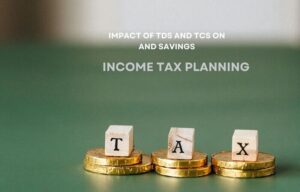Why It’s Time For A New Fixed-Income Reality

The days of a broad rally in the fixed-income market allowing investors to generate decent returns without much in-depth research are long gone. The COVID-19 pandemic has had an unsettling impact on the global economy, including the otherwise stable fixed-income sector, necessitating rethinking fixed-income research.
Zero-Interest-Rate Regime And Fixed-Income Markets
Just like during the subprime mortgage financial crisis of 2008, the main tool used by central banks to deal with the impact of the COVID-19 pandemic has been quantitative easing and zero-interest-rate policies. This time, however, income generation faces new challenges, as bond yields are significantly lower. Bid-ask spreads and other liquidity indicators in the markets remain unstable, making it expensive to trade investment-grade bonds. Furthermore, with all indications in place that the current zero-interest-rate regime is here to stay for some time, Treasury yields are likely to remain low.
Corporate bond issuance saw a steep rise in 2020, leading some to believe that corporates may be overly leveraged. However, the current spurt in corporate bond issuance is essentially a defensive move, with companies hedging themselves for easier access to the markets in the event of a return to a high-volatility event, as was seen in the panic selling of March 2020. This behaviour points towards a desire on the part of corporates to conserve cash, not the best precondition for higher returns on investments.
The Importance Of Fixed-income Research In The New Order Of Things
It would be a mistake to consider corporate bonds inexpensive in the micro sense just because they are inexpensive in the macro sense in this new regime. The concurrent trends of Fed support and the downgrade/default cycle highlight the critical need for deep credit research in expressing a credit stance to the best of one’s ability. It is feasible, perhaps likely, that the corporate bond market would perform well, but implementing that exposure could perform poorly if it is not done correctly.
As yields have plummeted, the appeal of corporate bonds has grown as the Treasury side has driven the yield decrease. However, as discussed in the previous section, corporate bond issuance seems to be driven by conservative rather than aggressive market sentiment. When we consider a future of yields in which Treasury rates are likely to remain low, thanks in part to a dovish Fed, income from non-government sectors, particularly corporations, is expected to be more valuable. Over the medium and long run, income is expected to continue driving returns, and it should be an important component in portfolios.
Leveraging Technology For Fixed-Income Research
Many knowledge-partner firms have been providing fixed-income research services to some of the world’s largest credit funds for over a decade. Their research teams not only handle time-consuming and routine tasks such as financial modeling, capital structure analysis, relative value screening, covenant analysis, stress testing, and writing investment notes but also assist asset managers with high-value tasks such as generating trade ideas, identifying investment themes and providing deep industry insights.
The changed realities of fixed-income markets call for high-quality, cutting-edge research to unlock breakthroughs in the present regime of stagnation in the bond markets. Quantitative-easing policies and low-interest-rate regimes being implemented by major economies pose the danger of spiking inflation that could significantly eat into the returns of fixed-income investors. Thankfully, data-driven technology working on the cutting edge of finance has the potential to offer tangible solutions to bond investors in this new fixed-income reality.

Pranab Bhandari is an Editor of the Financial Blog “Financebuzz”. Apart from writing informative financial articles for his blog, he is a regular contributor to many national and international publications namely Tweak Your Biz, Growth Rocks ETC.






